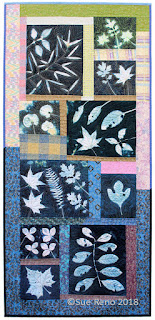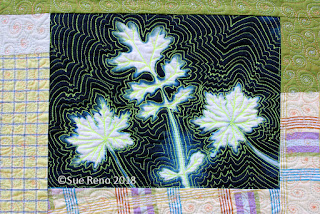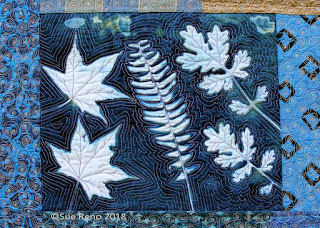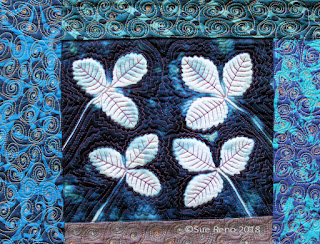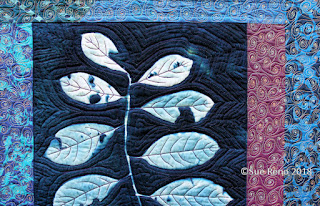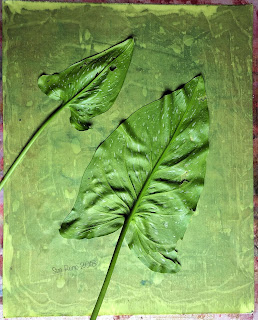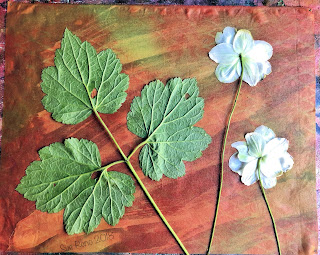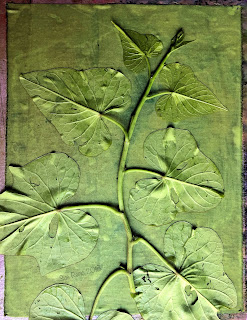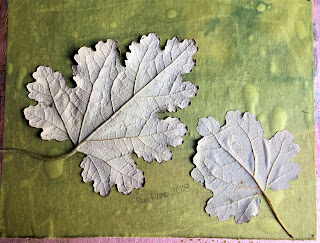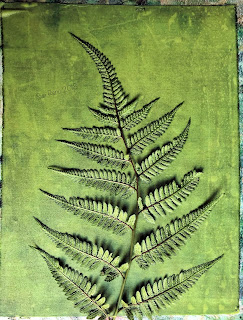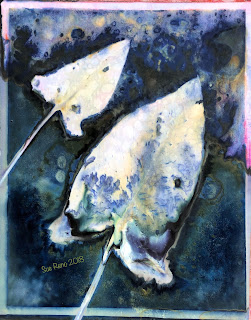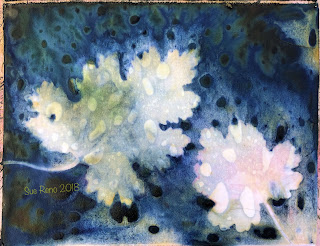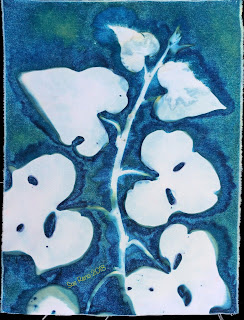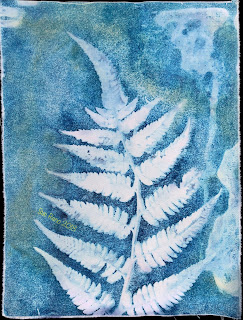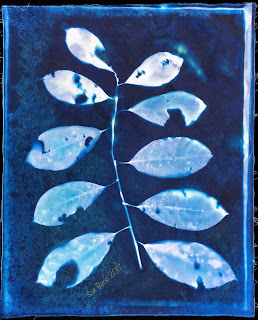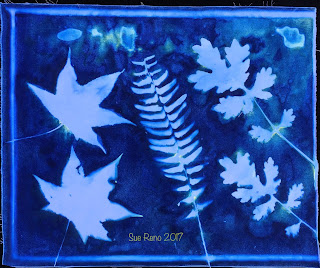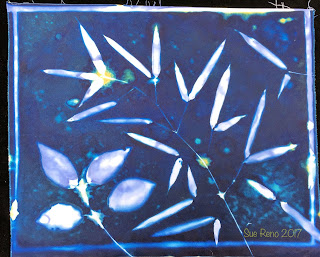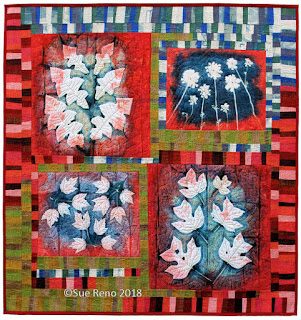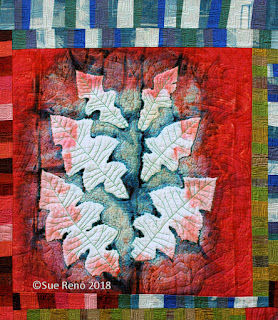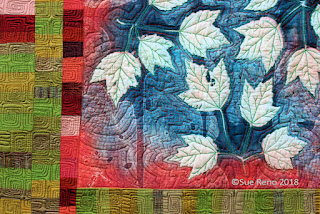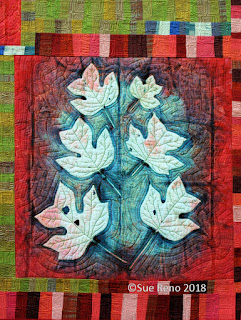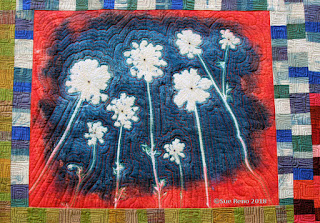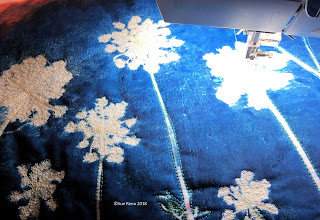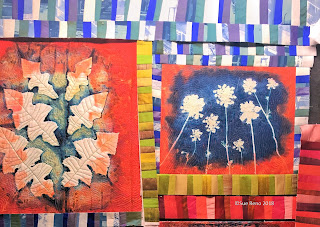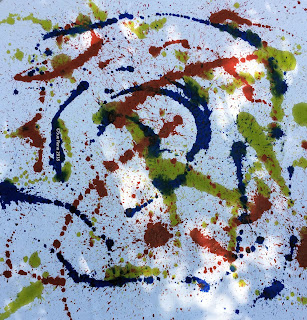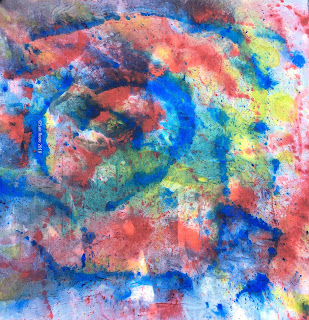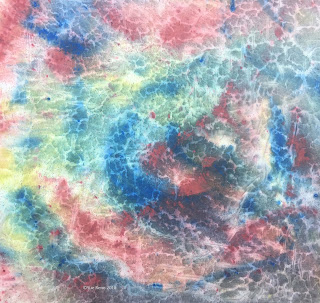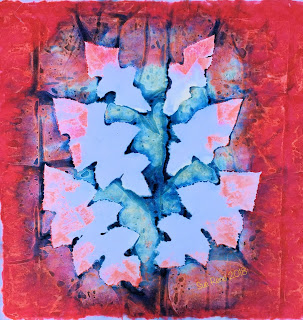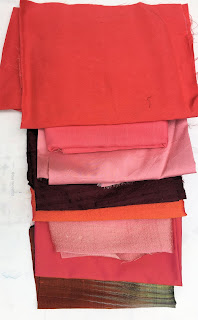Conditions were not ideal, but when are they ever? I had been away from the studio for a time and was itching to do some wet cyan work. The weather was partly cloudy, humid, and warm for October. The main difficulty was my lack of treated fabric, so I put the wet back in wet cyan and used cotton that I treated with the cyanotype chemicals on the spot. This method doesn't give the fabric time to absorb the solution as deeply, so the image tends to be more on the surface, but that's a difference I can live with in limited quantities. I started with a print of two calla lily leaves.
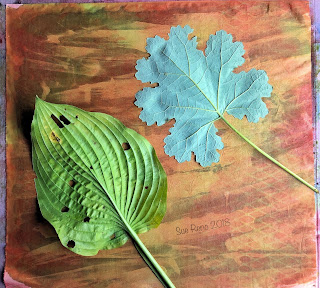
I am also, after a summer of frenzied printmaking and quiltmaking, running out of my preferred cotton sateen prepared-for-dying fabric, so I experimented with wet treating sateen that I had previously painted with textile paints. I made two prints with this, a hosta and plume poppy arrangement, and one with Japanese anemone leaves and flowers. The white anemones are among the last perennials to flower in my garden, and their pure color and form is always most welcome.
I proceeded on my last scraps of sateen with an ornamental sweet potato vine,
more plume poppy leaves,
and a painted fern frond. Everything was covered with glass and set out in the intermittent sun for about six hours.
Here are the prints after exposure and before rinsing.
That bit of pink around the edges of the calla print are from some highly diluted textile paint I sprayed on before exposure. Usually it migrates under the leaves, but not this time. Wet cyan prints are highly unpredictable.
The ones on previously painted fabric are looking very promising.
Again, when working with freshly treated fabric, I know there's going to be a lot of washout, so I let these dry overnight in the dark to help mitigate that a bit.
And it's always good to appreciated them at this transitory stage.
Here are the finished prints. You can never go wrong with calla lily leaves.
I'm very happy with this one! The grid pattern in the leaves is from drying the peach painted fabric on my lawn furniture.
Oh, this one's a beauty too. Stitching will bring out the leaf veining and petal shapes.
A very solid sweet potato vine print here. Not a lot of wild coloration but great graphic impact.
Same batch of chemicals, same exposure conditions, but this plume poppy print has a much softer feel and speckled surface texture.
And the batch is rounded out with this soft fern print.
All in all, a good experiment and pleasing results.
With this post, I am at 515 wet cyan images and process photos that I've posted here on my blog. I hope you are enjoying viewing them as much as I enjoy making and sharing them.
A reminder that you can also follow along on your social media of choice:
Facebook page:http://www.facebook.com/suerenostudio
Twitter feed: http://twitter.com/suereno
Tumblr: http://suerenostudio.tumblr.com
Instagram: https://www.instagram.com/sue_reno_studio/
